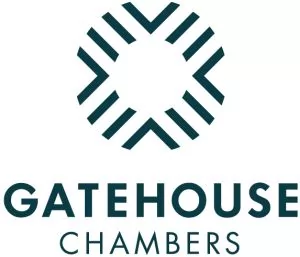- within Media, Telecoms, IT, Entertainment, Insurance and Family and Matrimonial topic(s)
- with readers working within the Insurance and Construction & Engineering industries
After a busy summer news cycle dominated by predictions of recession and soaring energy prices, employers might be tempted to think that talk of the Covid furlough scheme scandal is a thing of the past. Not so. Recent figures obtained from HM Revenue & Customs (HMRC) by a freedom of information request show that 13,775 allegations of furlough fraud had been recorded by the beginning of May this year.
The creation of an online reporting portal has significantly streamlined the reporting process, making it likely the number of allegations will rise. In February, the Public Accounts Committee raised concerns that at least £4bn of taxpayers' money could be written off, blaming HMRC rather than pandemic pressures. On HMRC's own estimate, published in April this year, only £800m to £1bn of that is anticipated to be recovered by the end of 2022. With household budgets under pressure, it is likely that public pressure to recover monies fraudulently paid out will increase.
HMRC is not just under fire from MPs. In July, the National Audit Office (NAO) reviewed HMRC's accounts for 2021-22 and provided a specific qualified audit in relation to error and fraud in both the Covid Job Retention Scheme (CJRS) and the Self-Employment Income Support Scheme (SEISS). Gareth Davies, the NAO's comptroller and auditor general, expressed concern with the methodology used by HMRC to estimate fraud and error rates for the two schemes.
In relation to CJRS, problems were identified with the decision-making of HMRC caseworkers on whether overpayments were the result of errors or fraud. If there were insufficient resources to gather evidence of fraud, HMRC would often record that the threshold for fraud had not been met. In those instances, HMRC recorded overpayments as errors. NAO has promised to revisit this matter in their autumn 2022 report.
On 12 September, the Public Accounts Committee will consider HMRC's accounts in light of the NAO audit. The committee has announced it intends to question HMRC Permanent Secretary Jim Harra, alongside other senior officials, on the issues identified by the audit. With increasing attention on furlough fraud and HMRC shortcomings, we can expect an escalation of furlough fraud enforcement activity and a move to issuing penalties as well as pursuing prosecutions against company directors where HMRC believes it is in the public interest.
What does this mean for lawyers advising employers or employees? One of the easiest ways for HMRC to gather information to identify cases of fraud will be through the use of whistleblowers. The amount of HMRC time and resource that will be required to otherwise detect instances of employers requiring workers to undertake their duties during furlough would be significant. Employers should therefore anticipate that raised awareness via public campaigns or media coverage might influence employees to make reports to HMRC.
Some employees and workers might have motives other than, or in addition to, the public interest when whistleblowing, or employers may believe this to be the case. With escalating costs, such as rising energy bills, companies may be resistant to increasing wages in line with inflation. This might prompt previously silent employees who had worked while on the CJRS to consider whistleblowing. Since June 2013, there is no longer a pre-requisite for a disclosure to have been made in good faith, but this is a relevant question when looking at what compensation might be due.
Against this backdrop, it is vital that employers understand the legal framework that protects whistleblowers when they have made a public interest disclosure to a prescribed body, such as HMRC. Under the Employment Rights Act 1996 (ERA) when a disclosure is made to HMRC the employee or worker who makes it must have a reasonable belief that it is true. This can often surprise employers as their worker does not need to establish that their disclosure is in fact true.
It is key for an employer to understand this broader context as any dismissal on the grounds that the disclosure was factually wrong could well leave their former employee with a legal claim for compensation. Although there is an additional requirement that there has to be a reasonable belief that the failure being reported falls within the remit of a prescribed body, this is unlikely to be a meaningful hurdle if reports of fraud arising out of CJRS or SEISS are made to HMRC.
Employers should also be warned against subjecting an employee or worker to a detriment because of whistleblowing. Commonly reported detriments can include instigating disciplinary action, changing someone's place of work, or refusing to provide a reference post-employment. Those drafting agreements, including compromise agreements, must be mindful of section 43J ERA which ensures that the statutory right to make a public interest disclosure is not curtailed by any contractual duty of confidentiality.
There are broader concerns for company directors who have misused CJRS or related covid-19 financial assistance, such as bounce-back loans. A study by Pinsent Masons found that 268 directors have been banned from running companies by the Insolvency Service since 31 March 2021. This shows a marked increase from the official government figures from March this year and demonstrates a desire to pursue penalties and disqualifications alongside recouping misappropriated public funds. There are serious consequences for directors under the Fraud Act 2006 with a maximum term on indictment being ten years where the value of the fraud exceeds £500,000.
Companies would be well advised to take a proactive approach to identify any errors and where there are concerns about fraud, lawyers should be retained to assist with any necessary investigations and reporting to HMRC. In the meantime, companies should retain records of decisions they made in relation to the furlough scheme so they are ready for any questions HMRC could pose. After a short hiatus over the summer, HMRC can be expected to be approaching furlough fraud with renewed energies come September.
First published by International Employment Lawyer
The content of this article is intended to provide a general guide to the subject matter. Specialist advice should be sought about your specific circumstances.


